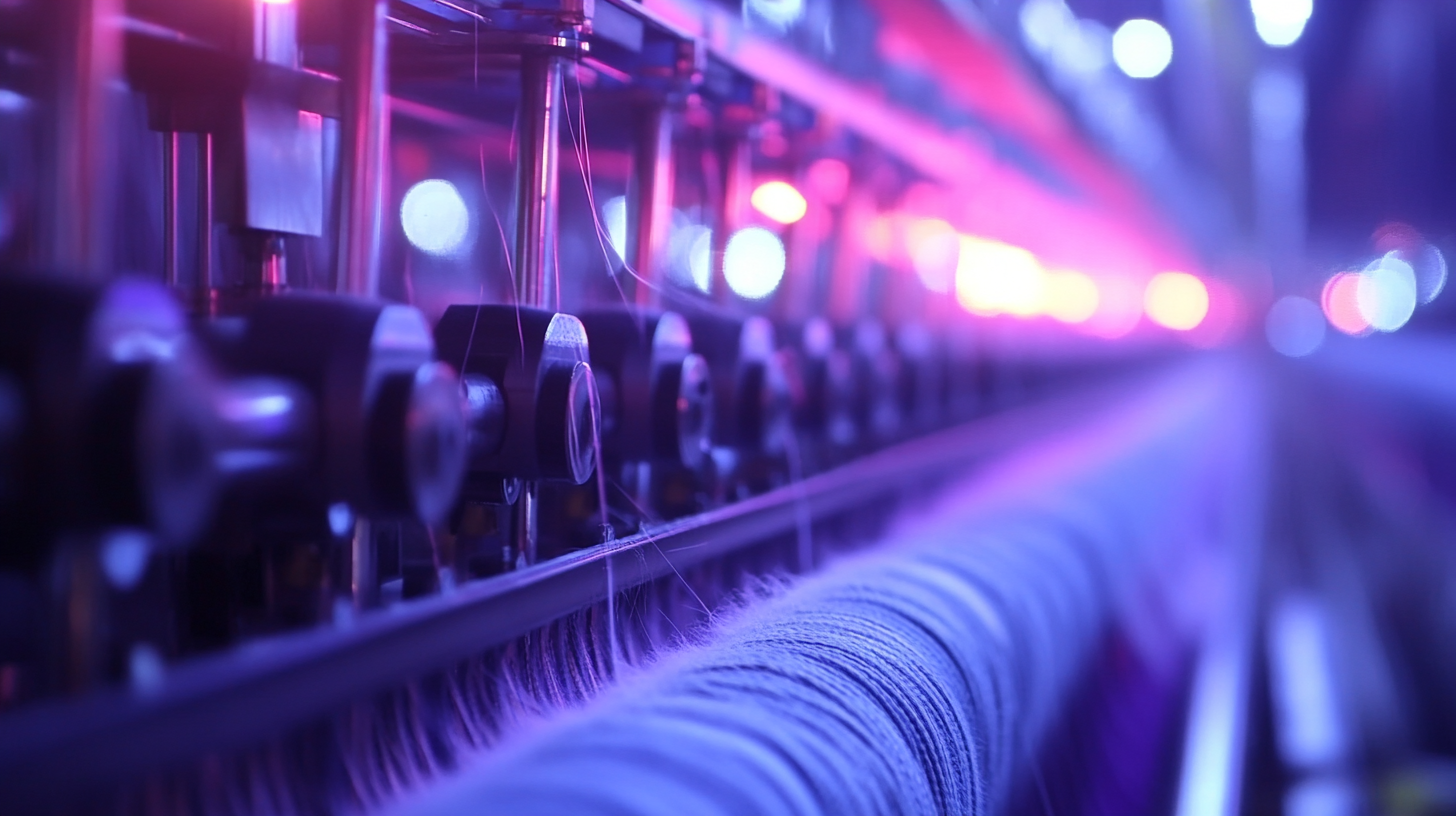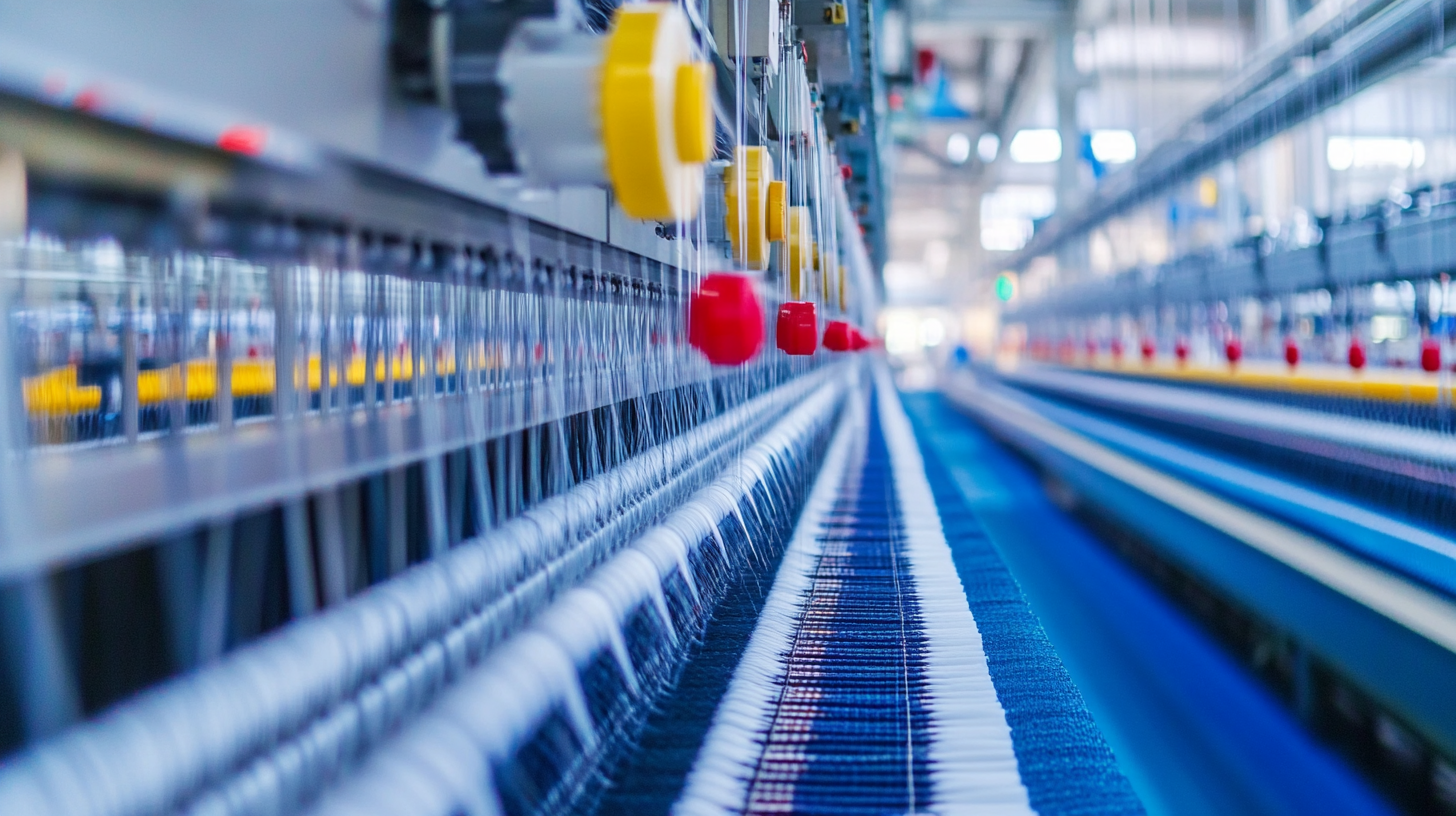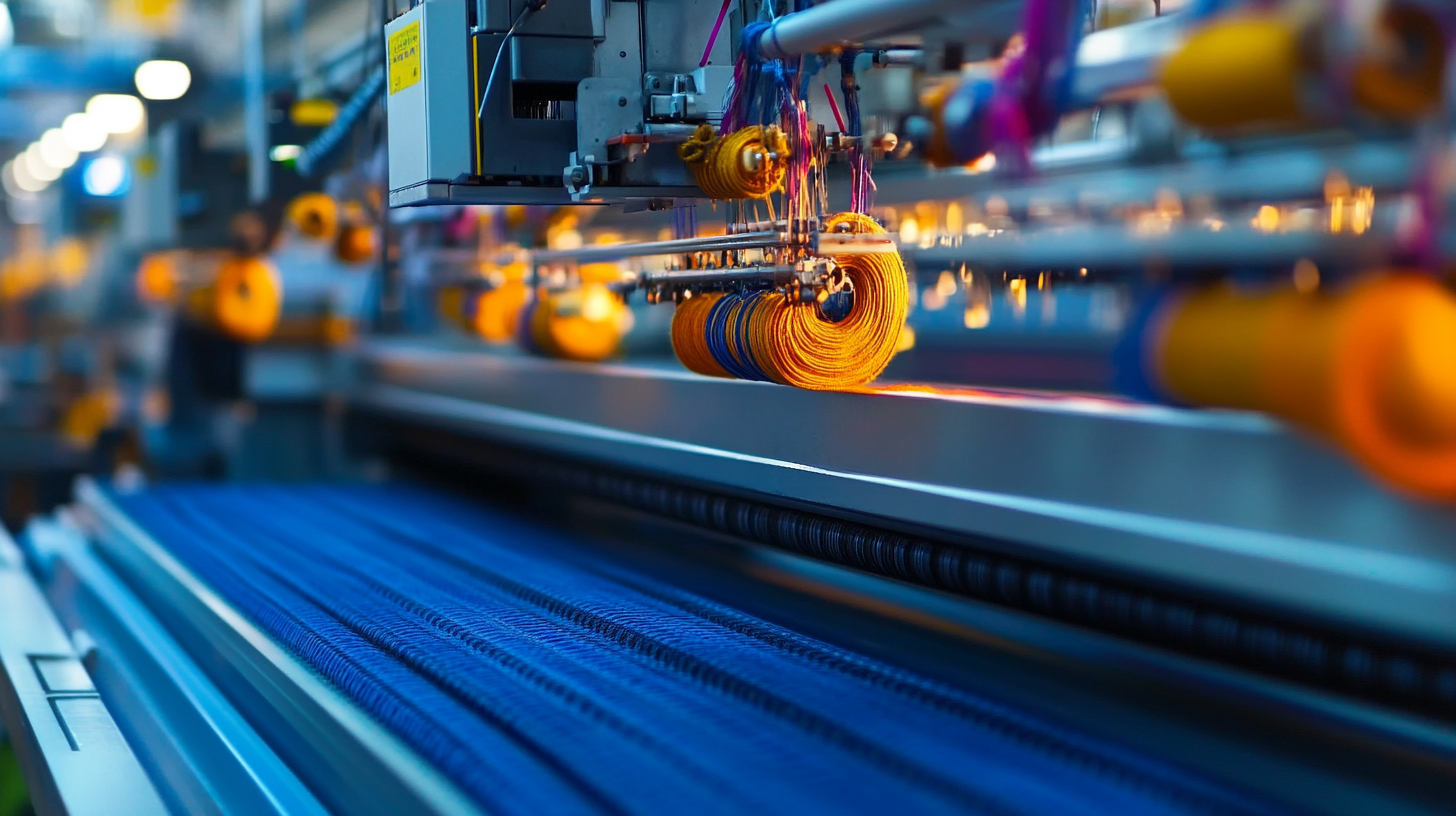Leave Your Message
As the global textile industry continues to evolve, the demand for efficiency and quality in production processes has never been more critical. According to a recent report by Technavio, the global textile machinery market is projected to grow at a compound annual growth rate (CAGR) of over 3% through 2026, driven by innovations in textile processing machines that enhance productivity and reduce waste.
 Textile processing machines play a pivotal role in this evolution, providing manufacturers with the tools needed to optimize operations while adhering to ever-stricter quality standards.
Textile processing machines play a pivotal role in this evolution, providing manufacturers with the tools needed to optimize operations while adhering to ever-stricter quality standards.
Furthermore, a study by Allied Market Research revealed that the adoption of advanced textile processing technologies leads to a 30% reduction in processing time and a 25% decrease in operational costs for textile producers globally. As businesses seek alternatives to traditional manufacturing methods, investing in state-of-the-art textile processing machines becomes essential for achieving a competitive edge in the fast-paced global market.
Traditional textile processing methods face numerous challenges that can hinder efficiency and quality, ultimately impacting the entire supply chain. One of the most significant issues is the reliance on outdated machinery, which often results in slower processing times and inconsistent product quality. The lag in technological advancement leads to increased labor costs and wasted resources, as workers struggle with the limitations of older equipment. As a result, manufacturers are finding it increasingly difficult to compete in a global market that demands both speed and precision.
Additionally, the environmental impact of conventional textile processing can no longer be ignored. Many traditional methods consume large amounts of water and energy, contributing to pollution and resource depletion. This not only raises costs but also poses a significant risk to brand reputation as consumers become more environmentally conscious. Companies are under pressure to adopt more sustainable practices, which can be challenging without access to modern processing machines that streamline operations and minimize waste. Transitioning to innovative technologies offers a pathway to overcoming these obstacles, allowing manufacturers to elevate their quality and efficiency while meeting the demands of today’s market.

The impact of inefficient machinery on global sourcing is profound and far-reaching. According to a recent report from the Textile World industry analysis, companies that utilize outdated textile processing machines can experience a productivity loss of up to 30%. This inefficiency not only hampers production timelines but also elevates operational costs, making it difficult for businesses to compete in an increasingly aggressive global market. As sourcing strategies evolve, the demand for faster turnaround times and higher quality continues to rise, placing additional pressure on manufacturers to modernize their machinery.
Moreover, the lack of efficiency in textile processing can lead to significant quality issues, directly affecting product consistency and customer satisfaction. A study from the International Journal of Textile Science indicates that 40% of textile defects can be traced back to inadequate processing equipment. Such defects result in increased waste and rework, further compounding financial losses and damaging supplier relationships. In an era where consumers are increasingly focused on sustainability, inefficient machinery not only affects profitability but also a company's reputation and its ability to source responsibly. Investing in advanced textile processing machines is no longer an option; it has become a necessity for businesses seeking to enhance their global sourcing capabilities.
In the realm of textile processing, innovative machines are at the forefront of revolutionizing production efficiency and quality. The knitting industry, a fundamental segment of textiles, has embraced modern machines that leverage advanced technology, significantly enhancing operational capabilities. Automated solutions, such as robotic garment assembly and AI-driven analytics, have contributed to streamlined workflows, leading to faster production cycles and reduced costs while maintaining high-quality standards.
Tips for maximizing efficiency in textile processing include investing in cutting-edge machinery that incorporates automation and sustainable practices. By opting for machines designed for energy efficiency and lesser material waste, manufacturers not only reduce their operational costs but also mitigate their environmental impact. Furthermore, staying updated on industry innovations, such as advancements in dyeing and finishing processes, can provide a competitive edge in the fast-evolving market.
The shift toward sustainability in textile manufacturing cannot be overlooked. Incorporating machines that facilitate recycling and eco-friendly dyeing processes can attract environmentally conscious consumers while adhering to industry regulations. By prioritizing innovative textile processing technology, businesses can significantly enhance their productivity and quality, making them more competitive in the global sourcing landscape.
The textile industry faces numerous challenges, from ensuring product quality to optimizing production efficiency. Advanced technology in textile processing machines is transforming how manufacturers address these common issues. For instance, automated fabric inspection systems equipped with artificial intelligence can now detect defects with remarkable accuracy, minimizing human error and ensuring that only the highest quality materials proceed through the production line. This not only enhances the overall product quality but also streamlines the workflow, reducing waste and reprocessing times.
Additionally, modern textile processing machines are designed with energy efficiency in mind. By incorporating the latest innovations such as smart sensors and data analytics, these machines can monitor energy consumption in real-time, allowing manufacturers to adjust processes dynamically. This leads to reduced operational costs and a smaller carbon footprint, which is increasingly important for businesses aiming to meet sustainability goals. Furthermore, advanced techniques like waterless dyeing are being embraced, significantly cutting down on water usage while maintaining vibrant colors and fabric integrity, ultimately revolutionizing the textile production landscape.
| Benefit | Description | Impact on Efficiency | Impact on Quality |
|---|---|---|---|
| Reduced Waste | Advanced machines utilize precision to minimize material waste during production. | High | Medium |
| Increased Speed | Automated processes significantly increase production speed compared to manual methods. | Very High | Low to Medium |
| Consistent Quality | Machine processing helps in maintaining uniformity, ensuring consistent fabric quality. | Medium | Very High |
| Labor Reduction | Automation reduces the need for manual labor, lowering overhead costs. | High | Low |
| Energy Efficiency | Modern machinery is designed to consume less energy without sacrificing performance. | Medium | Medium |
In the rapidly evolving textile industry, the demand for innovative processing solutions has never been more crucial. Recent industry reports indicate that the global textile machinery market is projected to reach USD 25 billion by 2026, driven by a surge in automation and efficiency. This shift is propelled by the need for manufacturers to enhance production capabilities while maintaining high-quality standards. As global sourcing becomes increasingly competitive, adopting advanced textile processing machines can significantly optimize operational workflows.

Efficiency in textile processing is not just about speed; it is also about reducing waste and improving product quality. According to research from the Textile World magazine, companies that invest in high-tech machines can achieve a reduction in production time by up to 30%, while decreasing raw material waste by nearly 15%. Innovations such as digital printing and automated cutting technologies are setting new benchmarks for quality, allowing manufacturers to deliver consistent patterns and colors that meet consumer expectations. With the future of textile processing leaning towards sustainability and precision, embracing these advancements is essential for companies aiming to thrive in an interconnected global marketplace.
